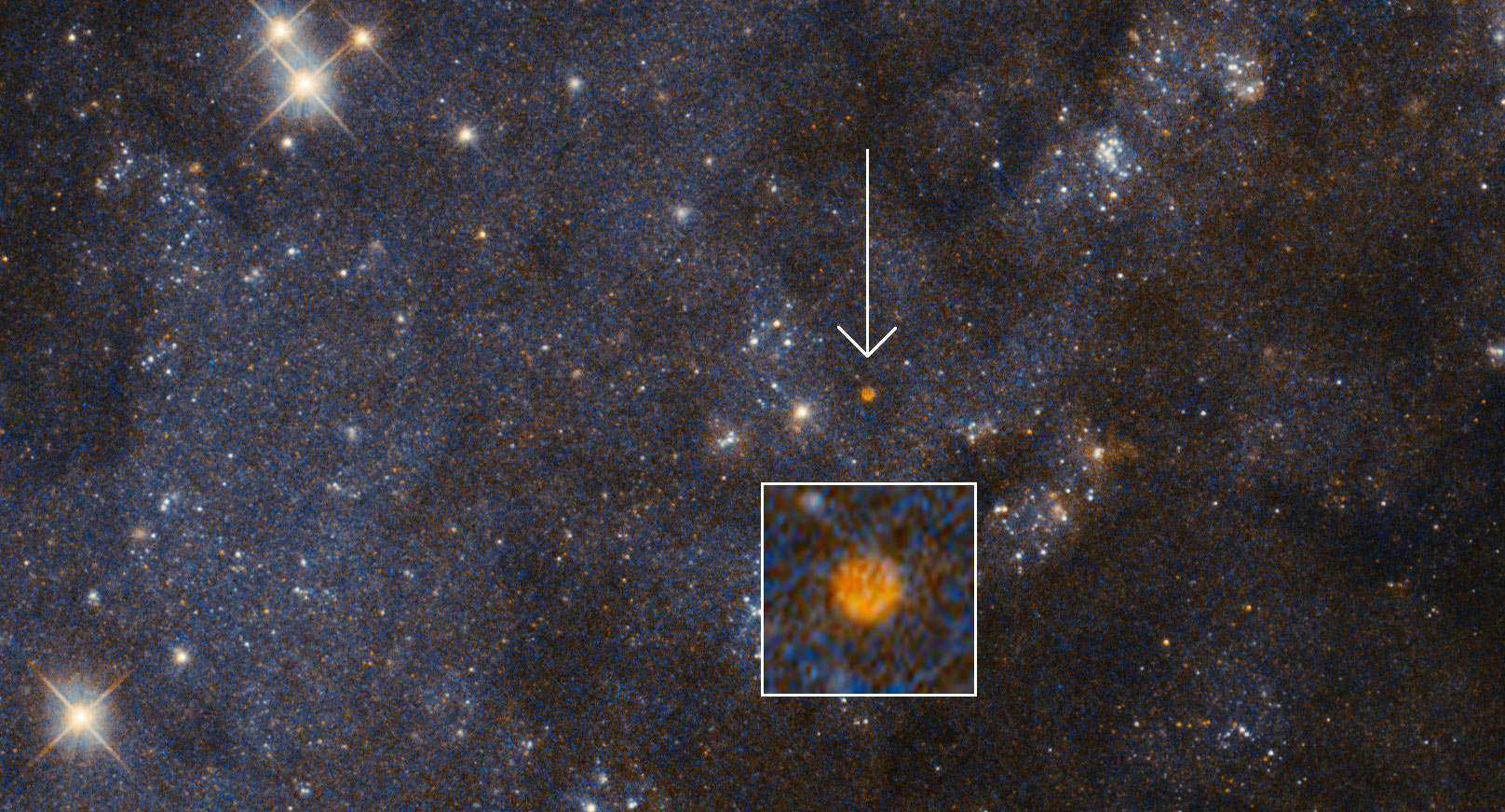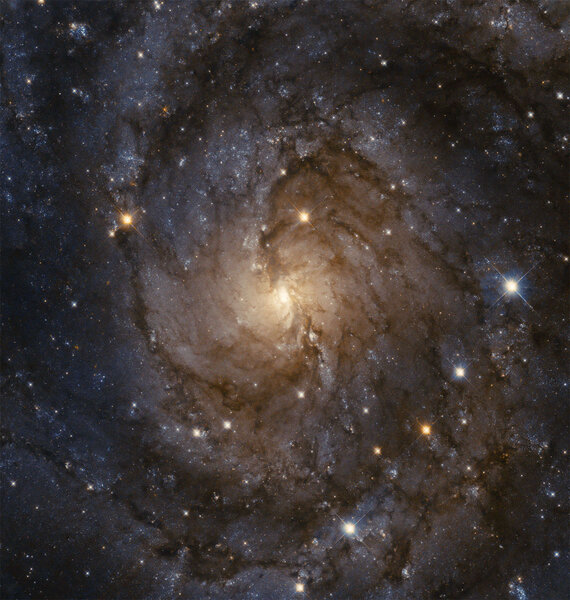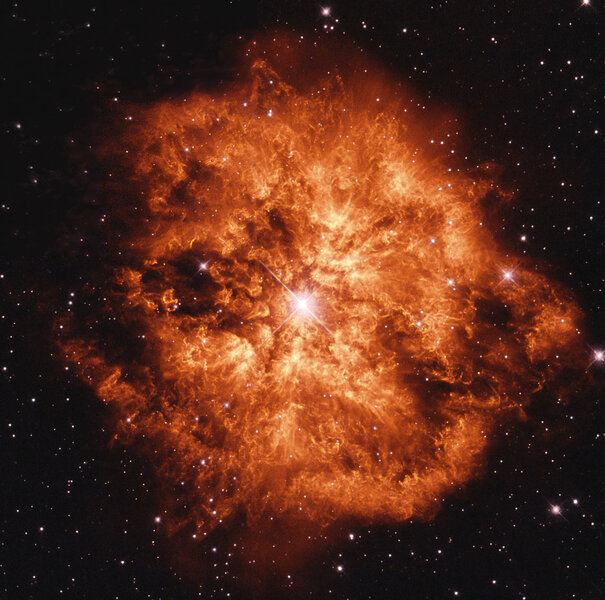Create a free profile to get unlimited access to exclusive videos, sweepstakes, and more!
The beautiful spiral galaxy IC 342 and the mysterious huge bubble

One of the more interesting galaxies in the sky is IC 342. It’s a face-on spiral, somewhat smaller than the Milky Way, and really there’s nothing in it or about it intrinsically that makes it particularly special compared to so many other galaxies we observe.
What does make it interesting is that it’s close — the distance is roughly 10–13 million light years — and in the sky it happens to be located near the plane of our own galaxy. That means we’re looking through all the gas and dust and junk in between Earth and IC 342, which obscures it greatly. If it were located in an emptier part of the sky it would probably be visible to the unaided eye, one of only a few galaxies that’s true for!
Hubble observed IC 342 in late 2019 using just two filters; one for blue light and one for red. The fantastic image processing whiz Judy Schmidt (aka Geckzilla) assembled the images into a spectacular shot of the galaxy:
Gorgeous, isn’t it? Because it’s close by in cosmic terms a lot of detail can be seen…but care must be taken here. A lot of the stars in the image are in our own galaxy, so it gets confusing.
Speaking of which…
I was chatting with Judy about this, and she pointed out a small, round object near the top of the frame that, at the scale above, is nearly invisible. In the full-res image (which is 8000 x 8000 pixels!) it’s more clear:
The arrow should make it obvious. I also blew it up by a factor of 5 and put it in the inset there so you can see it a little better. The object is about 15 pixels across, wonderfully round, slightly asymmetric (it’s thicker/brighter at the bottom), and quite red. The color is almost certainly due to hydrogen, which is extremely common in space and when warmed glows at a characteristic red color called hydrogen-alpha.
Round nebulae like this can have a handful of causes. It could be an exploded star, with a spherical bubble of expanding gas, the debris from the star, expanding around it. That was Judy’s first thought, and mine too. However, at a distance of 10 million light years, its size in the image would make it 36 light years wide, which would be impossibly huge for a supernova remnant like that. They get that big, but they fall apart, looking wispy, not like a soap bubble.
The same is true for a planetary nebula, the gas cast off of a star more like the Sun as it dies. Those at their very biggest might be 10 light years across, but wouldn’t be able to retain this shape either.
If it were a small star-forming bubble of gas I’d expect to see some stars inside it, too. But nothing.
I then wondered if it might be a Wolf-Rayet nebula. WR stars are mighty beasts, dozens of times the mass of the Sun and very unstable. They blast out gas at incredible speeds, and the fierce energy of the star lights the gas up. The gas clouds can be huge; for example the WR star AB 47 is surrounded by a nebula well over 100 light years across.
I think this is the most likely candidate, but without a lot more data there’s no way to know. Sniffing around, I found there’s a source of radio waves located very close to this position in the sky, enough so that I suspect it’s this nebula. But that hardly narrows things down. Lots of things emits radio waves!
Judy also noted it might be a regular planetary nebula located in our galaxy, coincidentally superposed on the more distant galaxy. That’s possible in principle, but then we have the opposite problem: It would be close enough to us that, given its apparent size in the image, in real size it would be improbably small. Also, if it were close, I’d expect to see the central star in the blue filter, though (they tend to be very hot and bright in the blue part of the spectrum) but nothing.
So really what we have here is a mystery. It’s certainly an interesting object! And I’d love to know what it is. But it may very well be that we’ll never know, at least not until some other telescope observes IC 342, or Hubble revisits it with different filters.
That’s frustrating, but then I’m used to it. When I worked on STIS, a camera on Hubble, we’d see weird things in our observations all the time. I made a habit of cross-referencing them against sky surveys when I could, and rarely found a match. It’s been over 20 years and I still wonder about a few of the weirder ones we saw… <sigh> I can throw this on that pile now too.
Still. It’s a beautiful galaxy, well worthy of study, and I bet other things will be found that have astronomers scratching their heads. It’s a big Universe, and there’s still a lot to see in it. Including stuff we can’t quite figure out… yet.

















